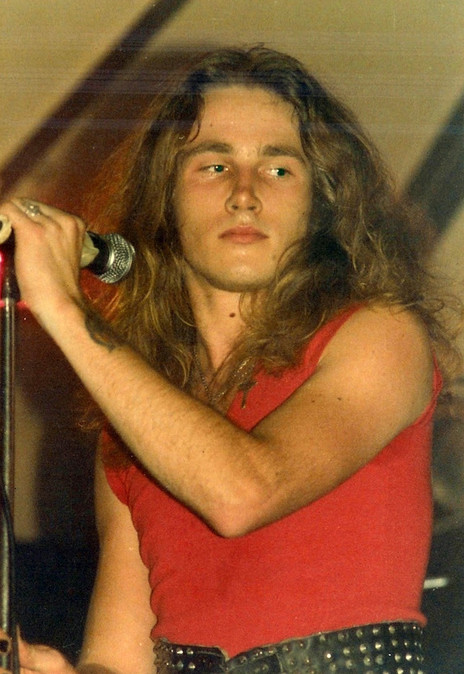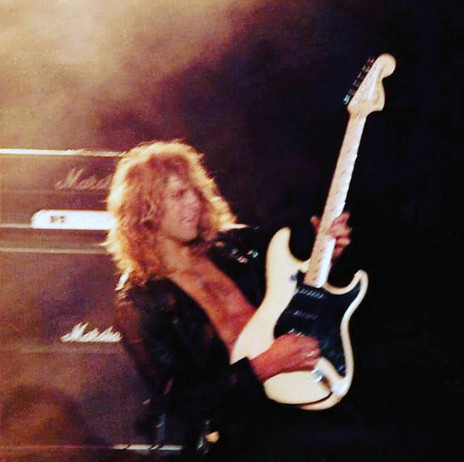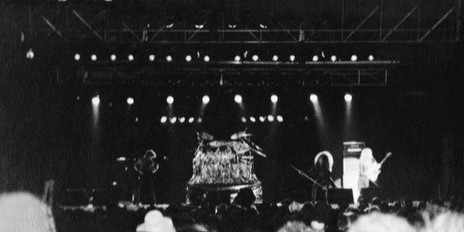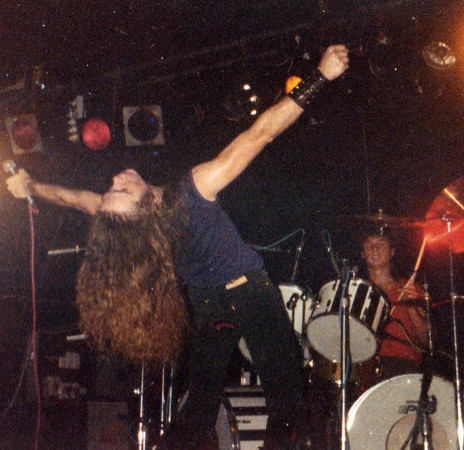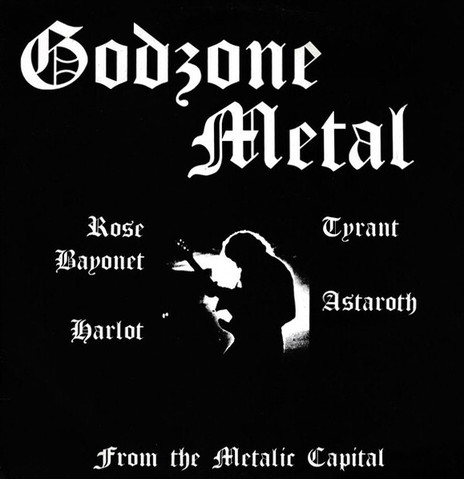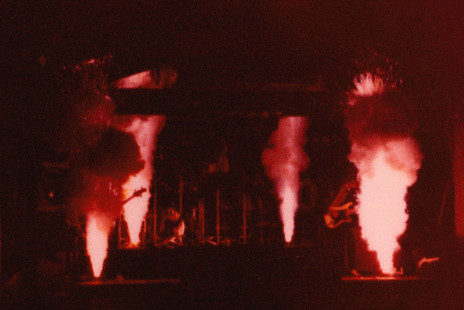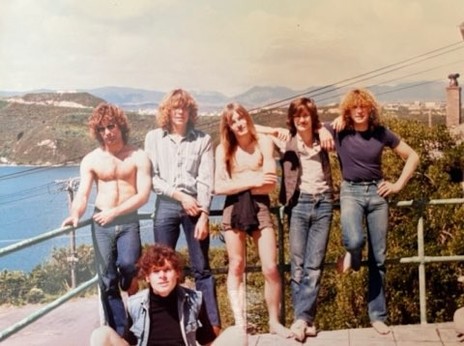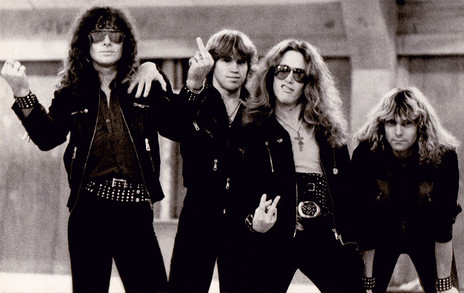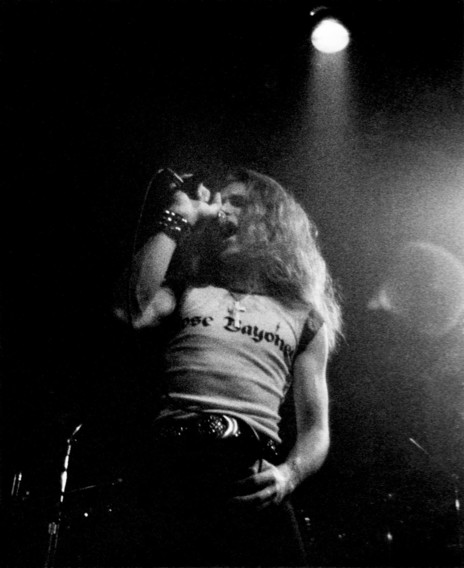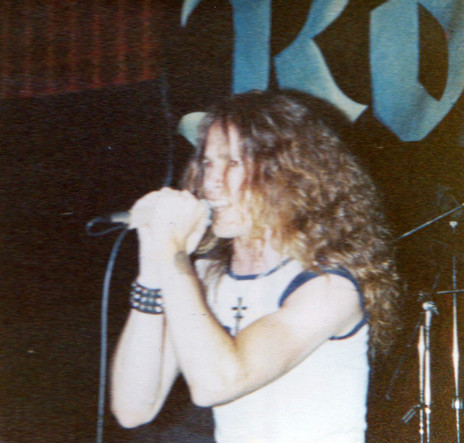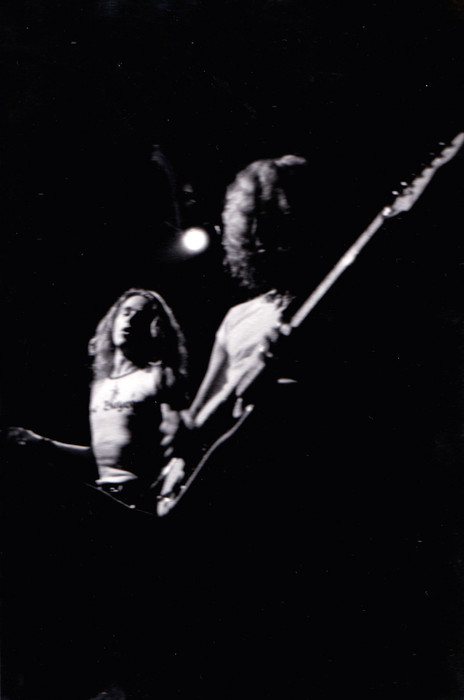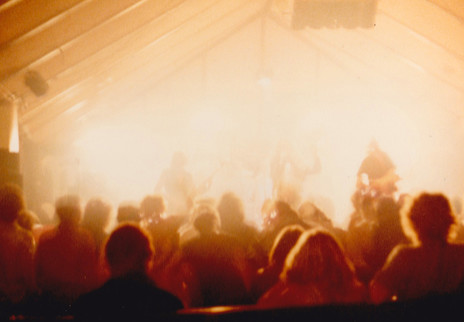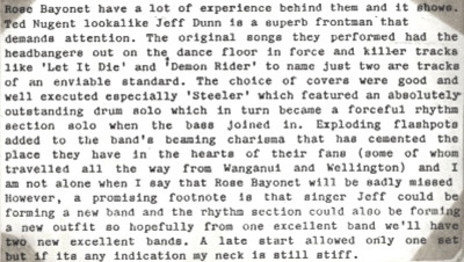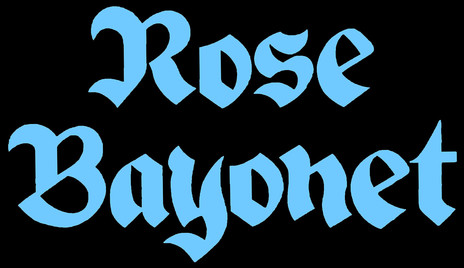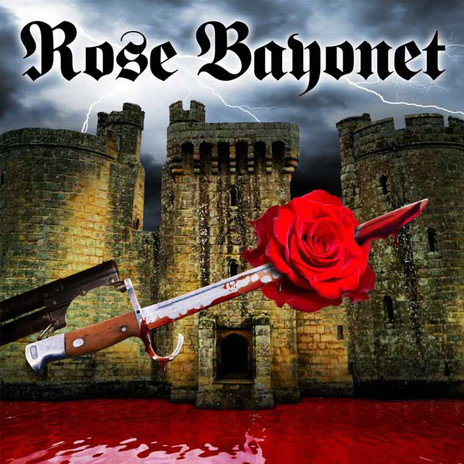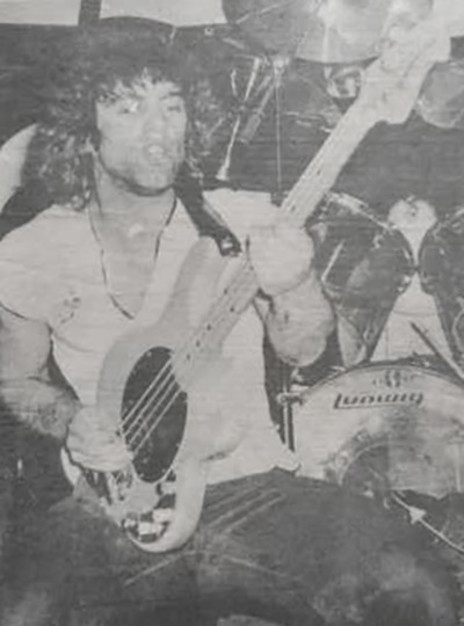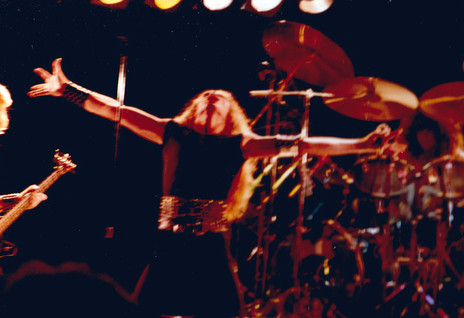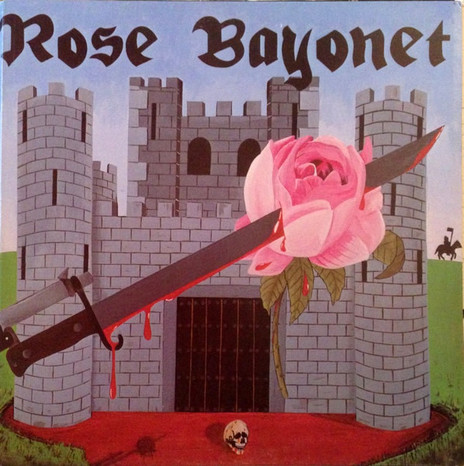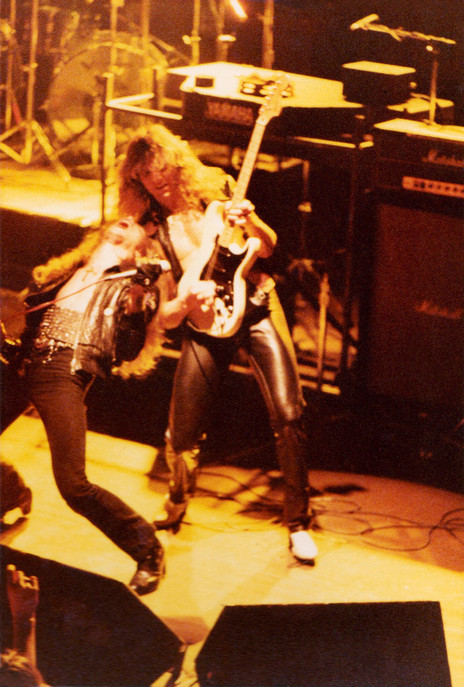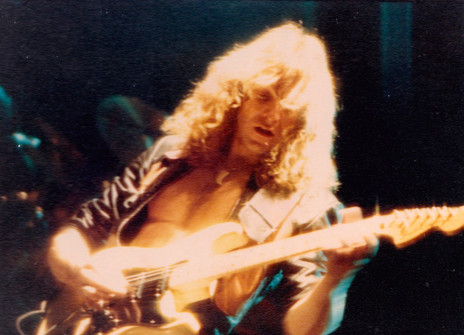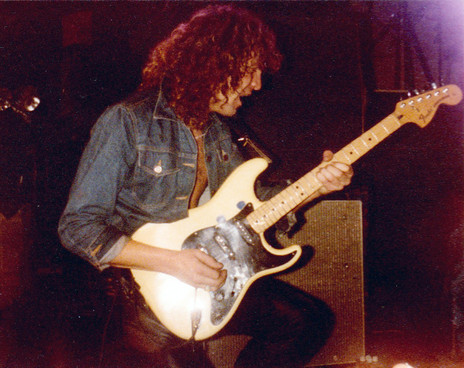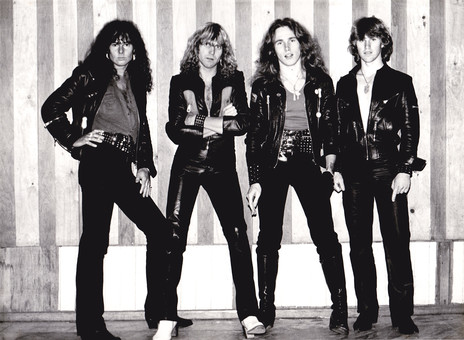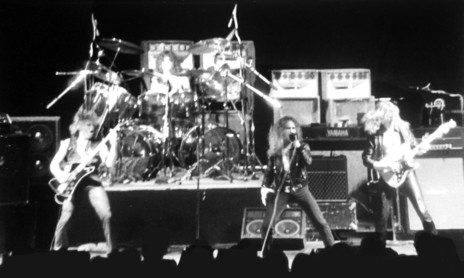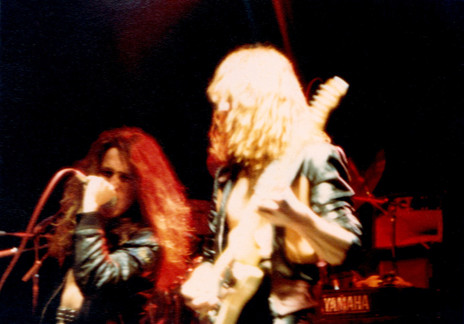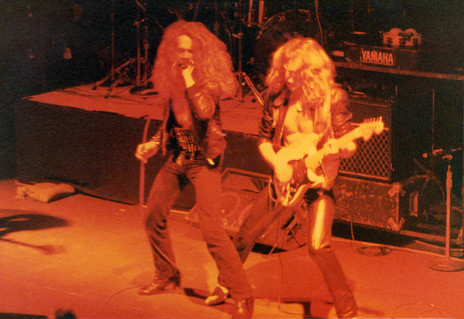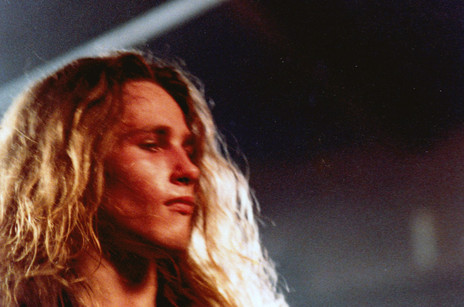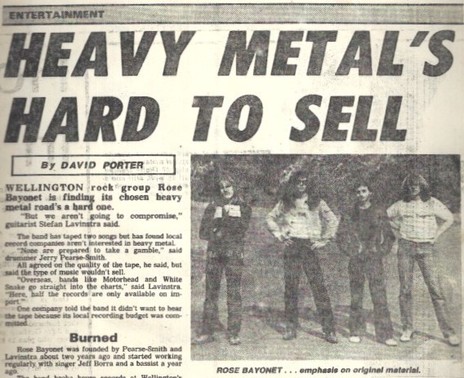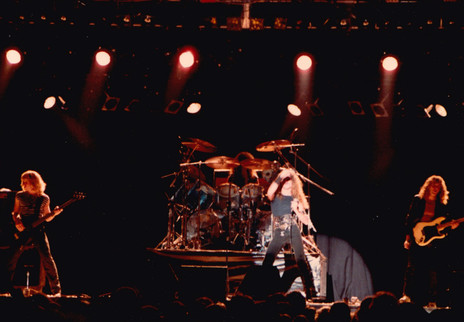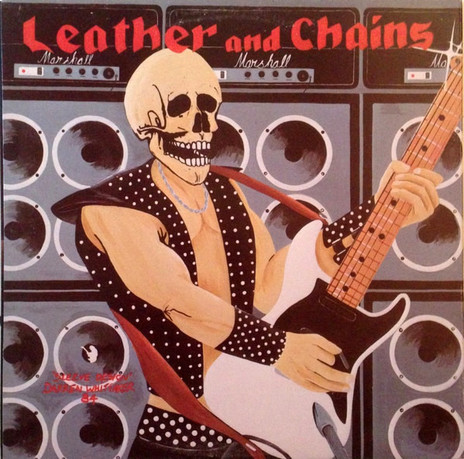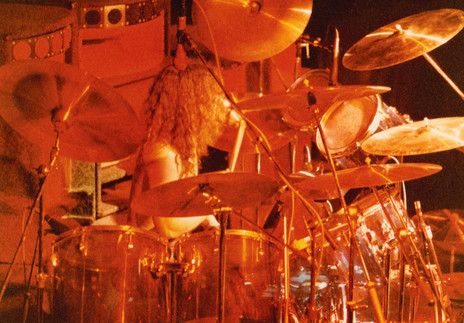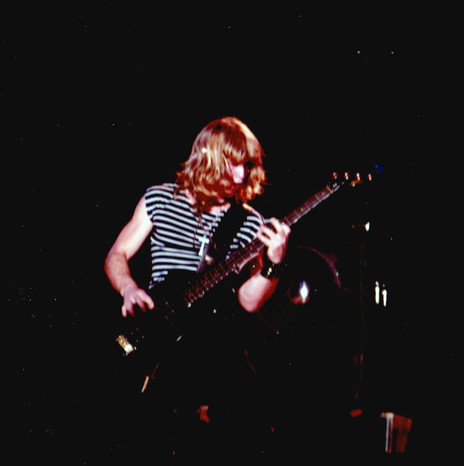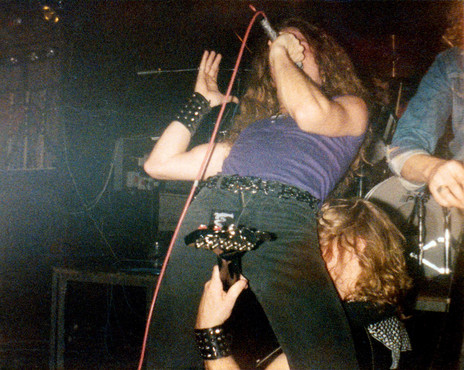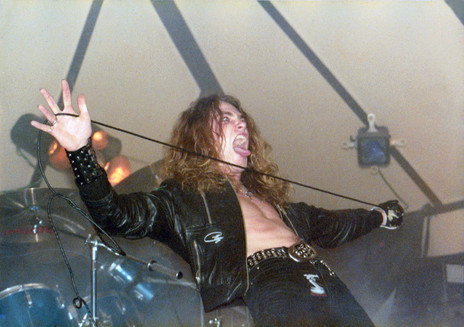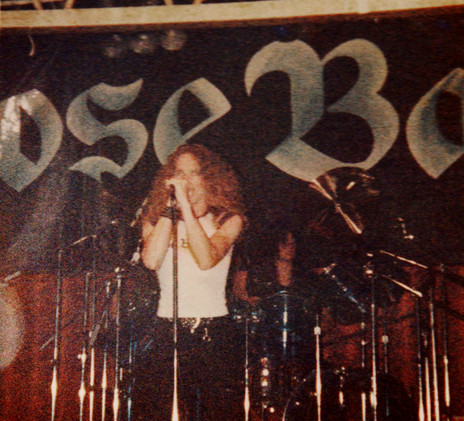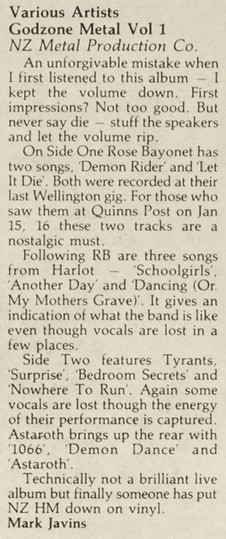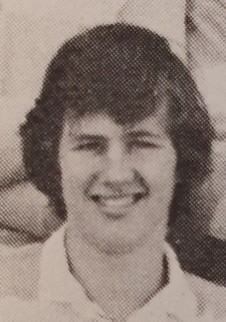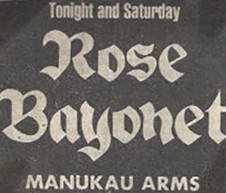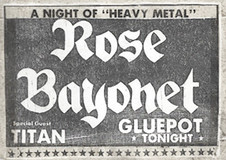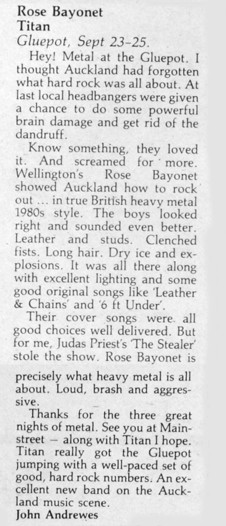Chances were high that Stefan Lavington would pursue a career in a creative field – his father Harry Seresin was the founder of Wellington’s Downstage Theatre; his uncle Chris Seresin was the keyboard player in BLERTA; his grandmother a painter; his mother a music teacher, and stepfather Harry Lavington was an actor. Music won out. Seeing Ragnarok on The Grunt Machine Lavington told himself, “I could do that.”
Via his stepfather’s record collection Lavington was exposed to a wide range of classic rock, and like so many budding New Zealand guitar players fell under the spell of Jimi Hendrix. But his lightbulb moment came on hearing Deep Purple’s ‘Made In Japan’ at schoolfriend Andrew Larsen’s house. “It blew my brains out,” Lavington recalls. Ritchie Blackmore instantly became his guitar idol.
Lavington took further inspiration from regularly seeing local guitar heroes such as Don Burke, Kemp Tuirirangi and Martin Winch from the top Wellington bands of the day. He also perfected the art of sneaking in at intermission time to shows by visiting international artists The Sweet, Rory Gallagher, Lou Reed, and Roxy Music.
Living on Weet-Bix for months, Lavington finally scraped together enough money to buy a Fender Stratocaster. Once he’d mastered the guitar with the aid of instructional books from the library, there was never any doubt in his mind that he could make it as a rock star. With Rose Bayonet, the band Lavington formed with friend Jerry Pearse-Smith in late 1979, he gave it his very best shot.
Lavington and Pearse-Smith sensed there could be a viable market for a full-on rock band
Lavington and drummer Pearse-Smith had discussed plans to form a group for well over a year. They sensed there could be a viable market for a full-on rock band, with many of their friends enjoying the same kind of music, but no local metal bands to see live. A clear vision of the presentation and image of the band was established, influenced by the spectacular stage shows of such UK bands as Rainbow, Iron Maiden and Judas Priest.
Originally named Black Widow, the initial line-up was a trio rounded out by Englishman Martin Robinson on bass and vocals. Black Widow played only one gig, at the Rock Theatre in Ghuznee Street supporting Midnight Oil. Realising the need for a stand-alone lead singer, Lavington approached Jeff Borra from the band Mia Karla, also on the bill that night. Borra’s brother Glenn, drummer with Mia Karla, also joined Black Widow as the band's lighting technician. In discussion with Lavington, Jeff Borra suggested a name change to Rose Bayonet, taken to reflect the band’s mix of lighter and heavier songs.
Top-shelf sound was deemed a number one priority for the new line-up. Mutual friend Paul Feenstra committed to becoming the sound engineer for the band. With no schooling available in New Zealand, Feenstra attended acquaintance’s recording sessions but felt dissatisfied with what he could learn. He moved to Australia to undertake a one-year course in sound engineering at Tin Pan Alley Studios at Milsons Point in Sydney.
Lavington worked at Lucas Batteries on the waterfront in Wellington. It was upstairs in the stock room that Rose Bayonet rehearsed, ear-bending volume being no problem during afterwork hours. Bassist Robinson left the band and was replaced by Warwick Hill from covers band Judas. A band logo was commissioned, then painted on to a huge canvas backdrop, and t-shirts and tour posters printed. Hill pieced together an elaborate lighting rig.
Guy “Fawkes” Davidson brought a ton of enthusiasm to the band. A graduate of the Radio New Zealand training school, the former 2ZM staffer insisted on becoming the band’s manager. Davidson’s brother Ginger, a talented photographer, frequently accompanied the band on the road, and took many photos of them. At Davidson’s suggestion, the band cobbled together the money for demos of two self-penned songs, ‘Night Fighters’ and ‘Death Rattle’, recorded at Robbie Duncan’s Sausage Studios. The rudimentary nature of this studio left the band dissatisfied with the results.
When Feenstra returned from Sydney in late 1980 Davidson set about finding the band live work. Following a practice gig at the Victoria University student rec room the band made its debut proper at the Terminus in Wellington. Set lists comprised contemporary tracks from the newly flourishing British metal scene, fleshed out with originals written by Lavington, Borra and Pearse-Smith. Borras’s lyrics included themes of the occult and warfare, staple fare for metal bands of the era.
The Terminus show generated a huge buzz ... Word of mouth spread quickly
The Terminus show generated a huge buzz, the manager immediately offering a residency. Word of mouth from excited punters spread quickly. A few gigs in, the band was invited to headline a rock show in Whanganui, and with an enthusiastic reaction from a large crowd, began to dream big. The band oozed self-belief and dressed and acted the part – long hair, tight jeans, leather jackets and attitude to burn.
Rose Bayonet prided themselves on being notoriously loud. Flash pot explosions, dry ice – warmed on heated trays for greater impact – and special effects all added to the classic heavy metal experience. Some of these special effects would be frowned upon severely by WorkSafe today. Feenstra purchased gunpowder and mixed it with the contents of fireworks which were broken open. These were placed in pots and arranged along the front of the stage; and during the show detonated by Davidson, perilously close to both the band and audience. Hill: “We had to watch closely for the signal and step back two feet or we’d have lost our eyebrows.”
1981 saw the band play regularly in the lower North Island, building up a loyal and committed following. Fan Euan McLeod first saw the band at the Whanganui Sports Stadium and was instantly hooked. “There were several other bands on the bill, but Rose Bayonet stood out with their superior sound and stage show, and reflected the music coming from the UK that me and my mates were into – Uriah Heep, Rainbow, Scorpions, etc.” From then on McLeod and his mates took every opportunity available to see the band, travelling from Whanganui to gigs in Lower Hutt, New Plymouth, Napier, Tauranga, and even Auckland. “We gradually got to know the band and even stayed with them a couple of times when our money ran out. Stefan’s guitar solos and Jerry’s drum solo on Judas Priest’s ‘Steeler’ were amazing”. Pearse-Smith: “We certainly had a very dedicated bunch of fans, many of whom came to nearly every gig. We never took them for granted”.
The band had another crack at recording. ‘Out Of The Tower’, with David Hislop contributing violin, and a second try at ‘Night Fighters’ were laid down with Ian Morris at Marmalade Studios in Cuba Mall. Again dissatisfaction with the result saw the recordings shelved.
Neil Domigan was impressed enough with the group’s live show to invest heavily in the band
Anatomy and Physiology lecturer Neil Domigan and Pearse-Smith were good friends from university days. Domigan was impressed enough with the group’s live show to invest heavily in the band. Although from outside the industry, Domigan brought a degree of professionalism to the band, ensuring rip-offs by venues and promoters ceased, and convening regular band meetings. He purchased a state-of-the-art 2500-watt JBL PA system from Paul Crowther’s Livesound, along with a seven-ton Bedford truck to transport it. He then rented these back to the band at below usual market rates. The band’s gear included a 144 square foot drum riser, built to accommodate Pearse-Smith’s double-bass clear-blue Ludwig kit. Bigger than many of the pub stages they encountered, the riser often required extra staging to be built on the fly by roadie Pete “Pump” Rowley.
The later months of 1981 saw more line-up changes in the band. Hill had a day job at Chappell Music Publishing. Company expansion saw a shift to Auckland and a job offer there too good to turn down. Peter Appleboom left his job as a teacher to take up bass duties.
And although a great singer, Borra’s forte was in pop and rock rather than the full-on metal material the band was now writing and performing. He was replaced in October by 19-year-old Geoff Dunn, spotted by Feenstra working at The EMI Shop in Dunedin. “I walked in and saw behind the counter a guy who looked the perfect fit for a metal band. Chatting to him he mentioned he was a singer. I got him to send a demo cassette to the boys in Wellington. A couple of months later he was on the plane and in the band.”
Dunn: “I was a huge fan of the burgeoning UK heavy metal scene. I even had a cardboard guitar that I pulled out when hard rock albums were on the instore turntable. I’d thought nothing would come of our chat till a phone call inviting me to join the band came through. It was a dream come true.” Pearse-Smith: “Dunn was one of the gentlest people you could ever meet but on stage transformed into a full-on metal dynamo.”
Recognising his savvy business brain, the band agreed Domigan should become their manager. Davidson stepped aside but continued his association with the band as its lighting technician, Glenn Borra having departed at the same time as his brother.
A Booking agent promised the band plenty of live work, but only if they moved to Auckland
Mike Corless of New Music Management got wind of the crowds they were attracting in the lower North Island and promised the band plenty of live work, but only if they moved to Auckland. They didn’t need asking twice, though bassist Appleboom was unable to shift north. Auditions for a new bass player, in a hall in Mt Victoria, resulted in 20-year-old Matt Hudson joining the band. Corless’s colleague Simon Elton booked the band on the well-worn pub rock circuit of the early 80s that included many venues previously unavailable to the band, due to those venues exclusive booking arrangements with NMM.
Just prior to leaving for Auckland, Rose Bayonet entered the studio for a third time. They recorded six self-penned songs at EMI Studios in Petone in March 1982, with EMI house engineer Peter Hitchcock at the controls. With Appleboom having departed, Lavington played all guitar and bass parts on the tracks. Frustratingly no label took the bait and disagreement within the band over the quality of the recordings scuppered even a self-release.
Mid 82 to early 83 saw the band almost continually on tour, with especially enthusiastic crowds at Quinn’s Post in Upper Hutt, the Hillcrest Tavern in Hamilton, Mainstreet in Auckland and The Cabana in Napier. They gradually introduced a higher number of original songs into their set, with Lavington providing the music and Dunn taking over from Borra with the lyrics. Titles included suitably metal-sounding tracks including ‘Demon Rider’, ‘Let It Die’, ‘Headbanger’, ‘Tough Road’, ‘Six Feet Under’, ‘Hell on Earth’ and ‘Predator’. Dunn: “Some of the lyrics crack me up now – ‘long flowing hair, black studded gear, leather and chains and bashing their brains!’”
With post-punk and new wave bands being music media darlings in the early eighties, Rose Bayonet ironically found themselves being the “alternative”. As there were virtually no other metal bands on the road in New Zealand they had the heavy rock field pretty much to themselves. Regular panning by the cool music press critics of the day only hardened their resolve, creating a “band of brothers” attitude within the band. In the letter’s pages of Rip It Up and the NZ Herald, outraged fans pushed back hard against the negative reviews. Other media treated the band more kindly. Radio Windy was particularly supportive, broadcasting an entire live show recorded at the Soundshell in Mt Maunganui. TV exposure came via Shazam! with a video for ‘Leather and Chains’ and Radio With Pictures filming ‘Night Fighters’.
Domigan found that the band was very principled and professional
Domigan noted that the band was very principled: support bands and suppliers always got paid. Their professional approach contrasted sharply with many contemporary bands.
Domigan: “Both Lavington and Pearse-Smith were phenomenal musicians – perhaps even world class. Their commitment to succeed was impressive. They rehearsed diligently and put a lot of thought, and expense, into their live show. Venues that would not accommodate their full live show were turned down. Drink and drugs were avoided to ensure each performance was the best possible. I remember a police raid at an open-air festival in Mount Maunganui which of course came up empty-handed. I even organised ‘band Olympics’ on off-days – canoeing, running and frisbee competitions.”
The group landed a coveted support act for Cold Chisel in 1982, at Wellington Town Hall. Chatting with them back at the hotel after the gig, Chisel’s Ian Moss and Jimmy Barnes urged them to relocate to Sydney. Impressed with their performance they felt the band were tailor-made for the pub and leagues club circuit there and would find Australian audiences very receptive to their hard rock sound.
Following the high of performing to a massive 30,000-plus crowd at Sweetwaters in January 83 though, the band took stock and realised their options going forward were limited. With little money in the bank and no record company backing, the dream of tackling the bigger Australian market was unrealistic. Tired and dispirited after living on the smell of an oily rag for more than two years the band completed a few final gigs and called it a day.
After Rose Bayonet folded, a couple of young fans, Shane Joyce and Stephen Britland approached Lavington, who agreed to let them issue the EMI master tapes. Joyce and Britland used their own money to fund the release of the LP, entitled Leather and Chains. Two live tracks were added to the six studio cuts. It was distributed by Jayrem Records, with a sole pressing of 500 copies. The original release is now highly collectable; a recent bidding war on TradeMe saw a copy sell for more than $600. Recorded at the band’s final gig at the Manukau Arms, a couple of live tracks also appeared on the similarly rare New Zealand compilation Godzone Metal LP in 1983. Dunn: “I, and presumably the other guys, never received a cent for any of those records sold … well, apart from my mum’s copy, which sold for $500 to a headbanger in Denmark.”
Tired and dispirited, the band completed a few final gigs and called it a day
To satisfy a barrage of requests, Dunn spruced up the Rose Bayonet album for re-release in 2020. The very basic cover artwork, text errors and songwriting credits were corrected, and a previously unreleased track added. Packaged in a gatefold cover with updated artwork, the numbered limited-edition blue vinyl record includes an insert with lyrics, black inner sleeve, and picture labels.
Following the break-up of Rose Bayonet, Lavington and Pearse-Smith returned to Wellington. Lavington formed new band Tokyo, with singer Charles Schultz and bass player Peter Hayes. With little enthusiasm for the music business in New Zealand, Lavington decided to relocate to London, where he still lives today.
Pearse-Smith pursued a successful career in the insurance industry and is now retired and living in Cromwell. While living in Dunedin he played briefly with Stark Raving, a band formed by former Rose Bayonet roadie Pete Rowley.
Hill left Chappell when parent company Polydor sold Chappell to Warners and closed its New Zealand offices. Moving to Australia he worked for several years for broadcaster ABC, helping establish the Triple J nationwide network of youth radio stations. He later spent time in Mexico, before returning to New Zealand to become a chef in Hawke’s Bay. After completing a degree at Massey University he is now a schoolteacher. He kept his hand in on bass, playing in the backing band on several Gray Bartlett-promoted tours and still plays in a covers band today.
Dunn briefly appeared with Auckland-based group Taurus and worked at Marbecks record store for many years. For several years he got to meet and interview many of his music heroes as a writer for Rip It Up. Now resident in Hawke’s Bay running the RockStuff vinyl sales website, Dunn sings for Hats Off To Led Zeppelin tribute band and acoustic duo Strider. He looks back fondly on his time with Rose Bayonet. “I was young, wild, and having loads of fun! I wouldn’t change any of it for the world”.
Borra left the music world for good after Rose Bayonet, and spent several years in the UK, flatting for a while with Lavington. Today he is a sales representative living in Upper Hutt.
Hudson joined The Crew with Jim Rowe on drums. He later moved to Melbourne, joining fellow New Zealander Charles Schultz’s hard rock band Witness. On his return to Auckland he played in Gigolo, a covers band that featured Simon Alexander, Shanley Del, and Martin Williams from the Grammar Boys. He’s now based in Featherston where he has his own studio, Iron Harp. Also handy on keyboards, he plays in several bands including Mr Unit and Spookytones.
Feenstra moved to Hollywood where he established himself as an in-demand sound engineer for television productions. Over a 25-year stay in Los Angeles, Feenstra was involved in over 1100 films and TV shows and nominated twice for an Emmy Award.
